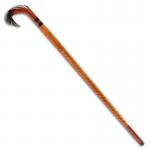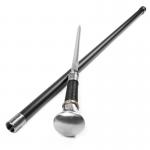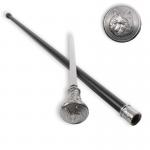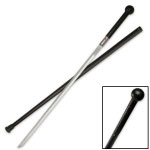Self-Defense Canes, Walking Sticks & Sword Canes
-
$49.95
-
$139.95
-
$149.95
-
$119.95
-
$149.95
-
$92.95
-
$154.95
-
$144.95
-
$49.95
-
$49.95
-
$49.95
-
$39.95
-
$49.95
-
$42.95
Self defense canes have grown in popularity as practical and discreet tools for protection. Typically crafted from hardwood, high-strength polymers, or even metal alloys, these canes can be used to block, strike, and control an attacker without drawing attention to themselves as weapons. Unlike traditional self-defense weapons, self-defense walking sticks can often be carried legally in most public places, making them a preferred option for personal security, especially for seniors, travelers, or those with mobility issues. Their blend of functionality and subtlety makes them ideal for those who wish to be prepared without appearing confrontational. But, be sure to check your local laws, because some types of combat walking sticks, like sword canes, can be considered concealed weapons.
Martial arts canes have a long history, especially in systems like hapkido, escrima, and kung fu. In styles such as kung fu, the cane (often referred to as a kung fu cane) is used not only for training techniques but also as a method of conditioning the body and learning control, timing, and leverage. Many martial arts systems have adapted traditional cane techniques into their modern curriculum, helping students understand weapon dynamics and improving their coordination, reflexes, and situational awareness.
The concept of using canes for fighting is not new. In fact, the tradition of cane fighting dates back centuries. In 18th and 19th century Europe, gentlemen carried ornate walking sticks not just as a fashion statement, but also as a form of self-protection. These early combat canes evolved into structured systems of self-defense, such as the French martial art of "La Canne," which focused on swift, calculated strikes using a lightweight cane. Across cultures, the cane has always been viewed as both a walking aid and a personal defense weapon-versatile, legal, and efficient.
Sword canes, on the other hand, offer a hidden blade concealed within a cane shaft. While visually discreet, they can be lethal in the hands of a trained user. Though they are fascinating and iconic, sword canes are subject to strict laws in many areas, so it's critical that you research your local regulations before purchasing or carrying one. These concealed weapons gained popularity in the 19th century and were often used by aristocrats for dueling and self-protection. Today, sword canes are often collected for their craftsmanship and historical value, but many models are also designed for practical self-defense use.
In modern survival and emergency preparedness circles, the survival walking stick has emerged as a go-to tool for adventurers and outdoorsmen. These sticks are often equipped with hidden compartments for matches, knives, compasses, and other survival gear. Built for rugged terrain and real-world application, self-defense walking sticks in this category offer the strength and reliability needed for both wilderness travel and unexpected encounters.
Our excellent selection of fighting canes, combat canes, kung fu canes, and self-defense walking canes includes a wide variety of styles, materials, and functionalities. Whether you're a martial artist refining your techniques, an outdoor enthusiast preparing for the unexpected, or simply someone who values the combination of tradition, practicality, and protection, you'll find something that meets your needs.
With so many options available, it's easy to find the perfect cane that balances style, effectiveness, and legality. Many of our canes feature ergonomic grips, reinforced shafts, and tactical design elements that make them especially effective in self-defense situations. Some are modeled after traditional martial arts weapons, while others feature modern tactical designs optimized for real-world protection. From carved hardwood martial arts canes to lightweight polymer self-defense walking sticks, there's a solution for every user, whether your goal is training, security, or everyday carry.
What cane is best for martial arts?
When choosing the best cane for martial arts, the most important factors to consider are weight, durability, balance, and the specific martial art you practice. For practitioners of kung fu, a kung fu cane made from hardwood like hickory, rattan or oak offers excellent durability and traditional aesthetics. These canes are often curved at the handle and straight along the shaft, allowing for a variety of grip styles and blocking techniques.
For those training in systems like escrima, hapkido, or cane-based self-defense systems, a straight cane with a solid shaft and a hook handle (known as a crook cane) is often preferred. The hook can be used for joint locks and control techniques, making it a versatile choice for martial artists. Some modern combat canes are reinforced with polymer or metal to handle heavy striking without damage, which is ideal for impact training or full-contact demonstrations.
Overall, a well-balanced, sturdy cane with a comfortable grip and appropriate length is best. Training canes without sharp or concealed elements are usually safer and more appropriate for regular martial arts practice.
What size cane should I choose?
Choosing the correct size cane is essential for both functionality and safety. A cane that is too short can cause poor posture and back strain, while one that is too long can be cumbersome and ineffective for both walking and self-defense. The general guideline is to measure from the crease of your wrist to the floor while standing upright with your arms relaxed at your sides. This measurement typically provides the ideal height for comfort and support.
For martial arts or self-defense purposes, the height of the cane should also align with the types of techniques you plan to use. A cane that reaches the user's hip or slightly higher often allows for better leverage during strikes and blocks. Some martial artists prefer slightly longer canes for extended reach, while others choose shorter models for faster maneuverability in close quarters.









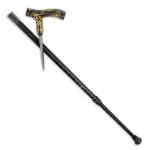

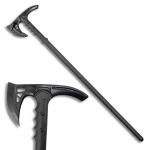
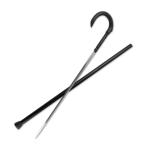

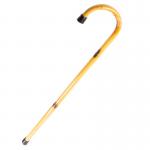
 (1)
(1)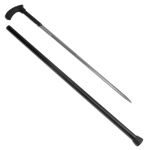
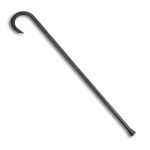
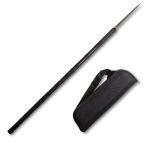
 (3)
(3)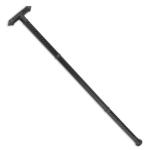
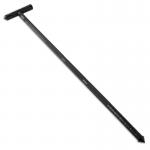
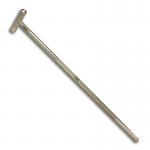
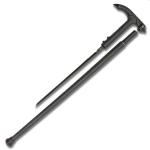
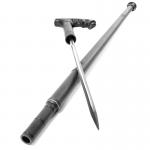
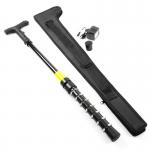
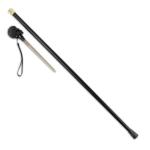
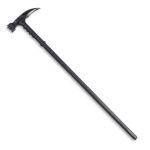
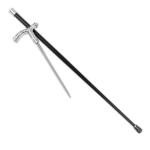
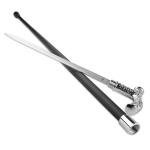
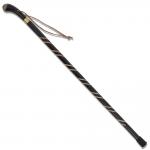
 (1)
(1)